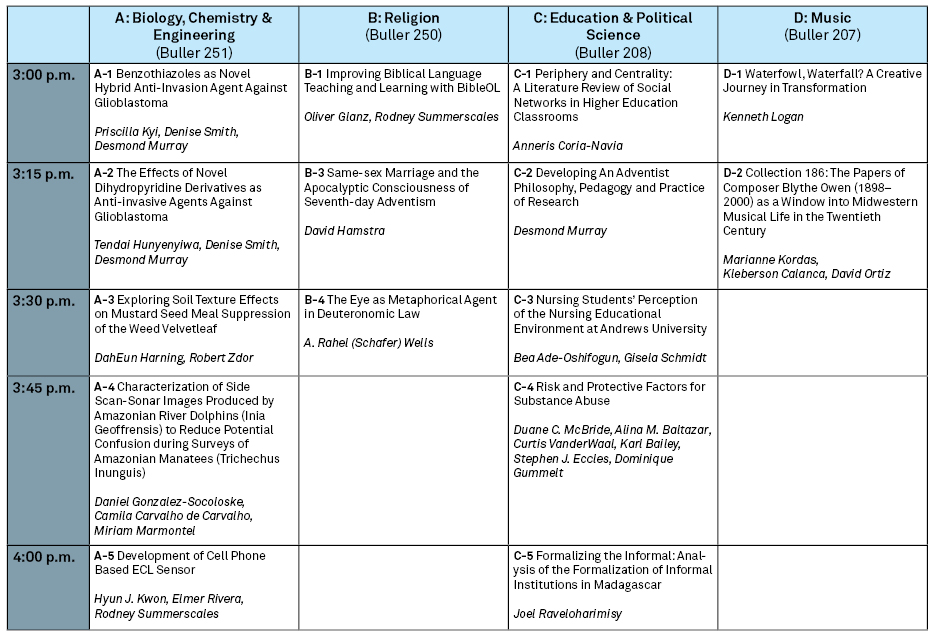B-3 The Eye as Metaphorical Agent in Deuteronomic Law
Presenter Status
Associate Professor of Hebrew Bible, Department of Religion and Biblical Languages
Preferred Session
Oral Session
Start Date
26-10-2018 3:30 PM
End Date
26-10-2018 3:45 PM
Presentation Abstract
Laws found in Exodus and Leviticus reference the eye as a specific body part, such as Exod 21:26, where damage to the eye of a slave results in freedom for the slave. However, Deuteronomic law shifts from this literal reference to a more metaphorical usage of the eye. In multiple passages and various laws, the eye is used in a metaphorical sense. For instance, bribes are said to blind the eyes of the wise in Deut 16:19, but receiving money in order to insure a certain action or decision does not lead to actual physical blindness. Here, the text indicates a metaphorical use of the eye to represent a part of the brain that judges correctly and fairly. Most of the remaining examples involve just retribution or punishment where the law specifies that the eye should not pity the one being punished (cf. Deut 13:8; 19:13, 21; 25:12). These passages indicate a metaphorical use of the eye to represent the emotions (or the heart), a part of the brain that is affected and moved by those who are suffering or punished. None of these laws in Deuteronomy discuss actual physical eyes or eyesight, but use the body part which normally is associated with physical eyesight to refer to mental and emotional thought-processes. Physical eyesight may certainly be involved in provoking these thought-processes, but the metaphor carries the meaning of the law into categories that would not require physical eyesight. For example, a blind person could still be bribed, described as the blinding of the eyes of their mind. A blind person could also still pity the one being punished for sin, described as the eyes of their emotions pitying the guilty. This paper will further explore the reasons for this metaphorical usage of the eye in Deuteronomy, as well as ramifications for metaphors found in legal material. Additional intertextual linkages with other metaphorical usages of the eye in the Hebrew Bible will also be noted.
B-3 The Eye as Metaphorical Agent in Deuteronomic Law
Laws found in Exodus and Leviticus reference the eye as a specific body part, such as Exod 21:26, where damage to the eye of a slave results in freedom for the slave. However, Deuteronomic law shifts from this literal reference to a more metaphorical usage of the eye. In multiple passages and various laws, the eye is used in a metaphorical sense. For instance, bribes are said to blind the eyes of the wise in Deut 16:19, but receiving money in order to insure a certain action or decision does not lead to actual physical blindness. Here, the text indicates a metaphorical use of the eye to represent a part of the brain that judges correctly and fairly. Most of the remaining examples involve just retribution or punishment where the law specifies that the eye should not pity the one being punished (cf. Deut 13:8; 19:13, 21; 25:12). These passages indicate a metaphorical use of the eye to represent the emotions (or the heart), a part of the brain that is affected and moved by those who are suffering or punished. None of these laws in Deuteronomy discuss actual physical eyes or eyesight, but use the body part which normally is associated with physical eyesight to refer to mental and emotional thought-processes. Physical eyesight may certainly be involved in provoking these thought-processes, but the metaphor carries the meaning of the law into categories that would not require physical eyesight. For example, a blind person could still be bribed, described as the blinding of the eyes of their mind. A blind person could also still pity the one being punished for sin, described as the eyes of their emotions pitying the guilty. This paper will further explore the reasons for this metaphorical usage of the eye in Deuteronomy, as well as ramifications for metaphors found in legal material. Additional intertextual linkages with other metaphorical usages of the eye in the Hebrew Bible will also be noted.



